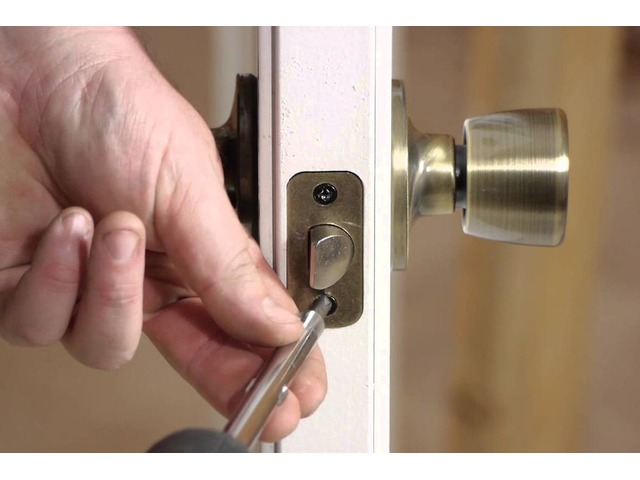Locksmiths are experts in metalworking. For example, they make gates, grilles, railings and stairs. They solder, shit, harden, glow and forge metals. Locksmiths install metal structures and machines and are also responsible for their repair. Arlington city locksmiths also make locks and doors and are responsible for their maintenance and repair.
Strictly speaking, the profession of locksmith no longer exists. In 1989, the traditional professions of locksmith and blacksmith were combined to form the profession of metalworker. Since, however, the job title locksmith has remained in general usage and perception to this day, this job title is also used in the following text.
What does a locksmith do?
The profession of locksmith or metalworker is very varied. One can roughly divide into two different areas: Trade and industry. In the trade, locksmith tasks include, for example, the construction of railings and doors, but also the construction and repair of locks. In industry, the locksmith or metalworker is usually responsible for the design and maintenance of plant and machine parts. The production of constructions is also one of the locksmith’s tasks.
Today, the locksmith profession comprises a total of five specialist areas. In construction technology (formerly construction locksmiths), locksmiths produce metal constructions of all types and sizes. These include, for example, stair railings, facade elements, sun protection elements and roofing. To do this, you prepare sketches and later, when cutting, hold onto them exactly so that everything fits later. Often locksmiths still work very traditionally by hand. In some cases, they also use computer-controlled milling and cutting machines to cut the parts.
When everything is soldered and screwed together, you treat the construction to protect it from corrosion. In a final step, everything is assembled.
Another field of activity is metal design (formerly an art blacksmith or locksmith). This is the most creative of all disciplines. You are responsible for the production and assembly of decorative objects of daily use. This includes, for example, artistically designed lights or fences, which you can make individually on customer request.
In the specialist area of commercial vehicle construction (formerly motor vehicle fitter) you will manufacture chassis, bodies, vehicle frames and superstructures for machines and commercial vehicles. You will also have to carry out all the electrical equipment and check its function extensively. This includes, for example, the cooling systems or the brake systems.
In the field of agricultural engineering, the locksmith profession deals with the construction and maintenance of machines and plants in agriculture and forestry. Last but not least, the locksmith’s tasks also include the field of plant and conveyor technology. Here you will be involved in the design, assembly and maintenance of conveyor systems, cranes and freight elevators.
How do you become a locksmith?
You want to become a locksmith and are now interested in training as a locksmith? A locksmith or metal worker is an apprenticeship occupation according to the German Crafts Ordinance. You have to plan about 3.5 years for the locksmith training.
Requirements
Legally, no specific school education is prescribed for locksmith training. More than half of the trainees have a lower secondary school leaving certificate. Approximately one third of the apprentices in locksmith training have an intermediate school leaving certificate. How important grades and school-leaving qualifications are for training to become a locksmith depends on the training company in question. If you really want to do a locksmith apprenticeship, don’t be deterred by any numbers, but go directly to the training company, describe your motivation for the locksmith apprenticeship and explain why you absolutely want to do a locksmith apprenticeship! For example, because you enjoy craftsmanship and like working with metals.
Apprenticeship
The locksmith training is dual. This means that you will complete your training both at a vocational school and in a training company. The best way to complete your locksmith training is in a crafts enterprise. Training as a locksmith can also take place in a large metalworking company. Here, however, the locksmith training is very company-specific and the content is not as broad as in a medium-sized craft enterprise.
In the vocational school, for example, the following course contents are on the timetable:
Welding of metal
Metal cutting and forming by hand
Maintenance of metal structures
Assembly of components
electrical engineering
quality management
In the third year of your locksmith training, you decide on one of three specialisations. Construction technology, commercial vehicle construction and metal design are all available. In construction engineering, for example, you will learn everything you need to know about locks, doors and metal constructions of all kinds, such as stair railings. In commercial vehicle construction, on the other hand, everything revolves around vehicles or their bodies and superstructures. Metal design is all about decorative metal products.
During the locksmith training, prospective locksmiths take two examinations. The first examination takes place after the second year of apprenticeship. Here you have to fulfill a customer order and take part in a technical discussion. The second examination of the locksmith training takes place at the end of the training. You take this last examination before the Chamber of Crafts. In terms of content, it is all about the content of your locksmith training.










